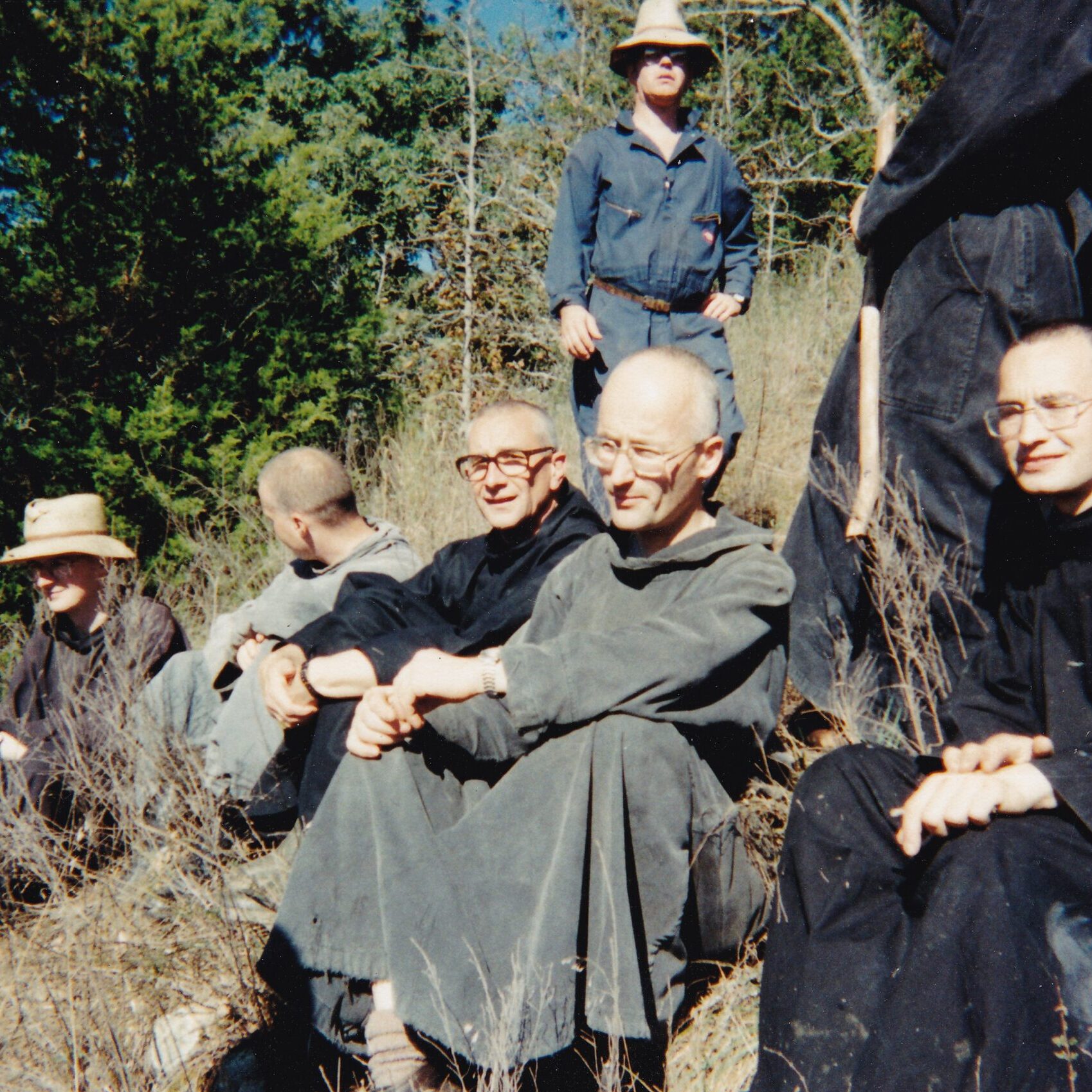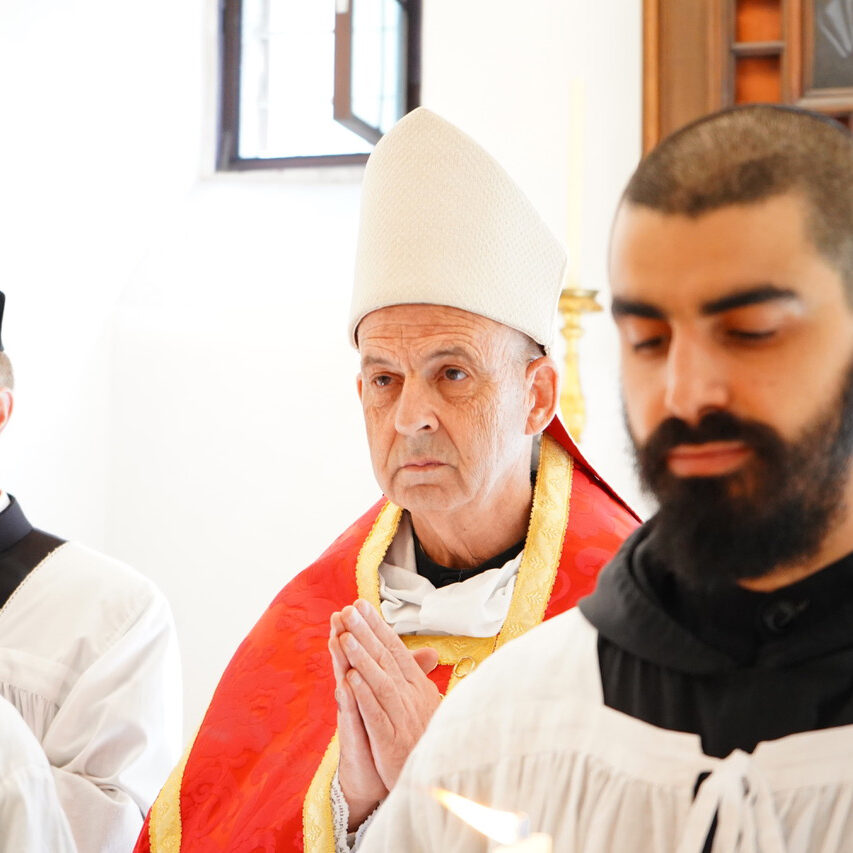Dear Friend of Clear Creek Abbey,
The clerical sexual abuse crisis that has now reached alarming proportions is like the many-headed Hydra that Hercules had to kill as one of his Twelve Labors—worse still, like the Beast of the Apocalypse with seven heads (chapter 13), something extremely hard to kill. Indeed, the restoration of the virtue of chastity in all its dimensions has become an urgent matter—a matter of spiritual life or death. What is desperately needed is a substantial reaffirmation of the Catholic doctrine concerning chastity and a new commitment to the vow of priestly celibacy, which is its corollary.
Surprisingly enough, our formula of monastic profession does not even mention chastity specifically. For as Dom Delatte points out, chastity—like poverty—is “included in the promise to observe monastic customs and the monastic mode of life: that is in the vow of conversio morum, of conversion of manners.” (Commentary on the Rule, Chapter 33) The only place where St. Benedict mentions the virtue by name is in his enumeration of the Instruments of Good Works, at number 63: “to love chastity.” But the Church has always taken for granted that for the monk chastity is an essential element of his life, a given. In truth it is even more: a vow, a virtue, and a mode of life.
One problem that is encountered rather quickly when the subject of chastity is treated is the fact that we sons of Eve are ashamed of the acts that chastity must address. It is all rather embarrassing as a subject. Why is this? As St. Thomas shows, following in this the teaching of Aristotle, the word “chastity,” castitas, comes from the fact that by this virtue “reason chastises concupiscence, which, like a child, needs curbing.” (Aristotle states this in the Nicomachean Ethics. [3,12, as quoted in I-II Quest 151, art 1 Respondeo.]) But these acts prompted by concupiscence and needing correction—impure venereal acts—are those of which men are the most ashamed, as St. Augustine points out in The City of God. (14, 18) St. Paul, for his part, even warns the faithful of Ephesus:
But fornication, and all uncleanness, or covetousness, let it not so much as be named among you, as becometh saints…(Ephesians, 5:3)
So we must be prudent in dealing with this volatile subject matter, but, following the examples of St. Paul and the Church Fathers, it is good and necessary for us to take up in due season this subject for the edification of our souls. To begin with, here is a key paragraph from the Catechism of the Catholic Church:
Chastity means the successful integration of sexuality within the person and thus the inner unity of man in his bodily and spiritual being. Sexuality, in which man’s belonging to the bodily and biological world is expressed, becomes personal and truly human when it is integrated into the relationship of one person to another, in the complete and lifelong mutual gift of a man and a woman… (2337)
Related to this doctrine, of course, is the vow of celibacy. In the minds of some critics this vow—taken especially by Roman Catholic priests as well as by monks and nuns—has become obsolete and no longer fits with the condition of men and women in our post-modern culture. There is nothing terribly new about this critique, but precisely because of the notorious cases of sexual abuse by priests, it has come back to haunt us with a vengeance.
It is critically important to remind ourselves that priestly celibacy is a precious gift from God and has played no small part in the history of sanctity in the Church. Recently Pope Francis echoed the words of Pope St. Paul VI in this regard: “I prefer to give my life before changing the law of celibacy.”
An image from the lives of the Saints captures rather well the whole question of the virtue of chastity and of the precious vow of priestly and religious celibacy. It is found in the episode of the sequestering of the young St. Thomas Aquinas. His family was so opposed to his decision to pursue a vocation as a Dominican that they locked him up in a castle and sent him a woman of questionable virtue in the hope that a lapse in chastity would destroy his vocation:
…Thomas was abducted by his brother Rinaldo…, says the chronicler, and taken to the second family castle… Thomas… vehemently resisted attempts to tear the Dominican habit from his back, and in a famous episode which probably occurred on the night of his capture or the following night, drove away with a firebrand a prostitute who had been sent to his room to seduce him from his vocation.
May God grant us such courage and a bold spirit of chastity! May the Most Chaste Heart of St. Joseph spread a new light and grace over our disheartened faithful. Finally, may the Roman Catholic clergy as well as the religious of all orders return to the practice of heroic chastity and of the beautiful and precious priestly celibacy. There is no other way.
br. Philip Anderson, abbot
Dear Friend of Clear Creek Abbey,
The clerical sexual abuse crisis that has now reached alarming proportions is like the many-headed Hydra that Hercules had to kill as one of his Twelve Labors—worse still, like the Beast of the Apocalypse with seven heads (chapter 13), something extremely hard to kill. Indeed, the restoration of the virtue of chastity in all its dimensions has become an urgent matter—a matter of spiritual life or death. What is desperately needed is a substantial reaffirmation of the Catholic doctrine concerning chastity and a new commitment to the vow of priestly celibacy, which is its corollary.
Surprisingly enough, our formula of monastic profession does not even mention chastity specifically. For as Dom Delatte points out, chastity—like poverty—is “included in the promise to observe monastic customs and the monastic mode of life: that is in the vow of conversio morum, of conversion of manners.” (Commentary on the Rule, Chapter 33) The only place where St. Benedict mentions the virtue by name is in his enumeration of the Instruments of Good Works, at number 63: “to love chastity.” But the Church has always taken for granted that for the monk chastity is an essential element of his life, a given. In truth it is even more: a vow, a virtue, and a mode of life.
One problem that is encountered rather quickly when the subject of chastity is treated is the fact that we sons of Eve are ashamed of the acts that chastity must address. It is all rather embarrassing as a subject. Why is this? As St. Thomas shows, following in this the teaching of Aristotle, the word “chastity,” castitas, comes from the fact that by this virtue “reason chastises concupiscence, which, like a child, needs curbing.” (Aristotle states this in the Nicomachean Ethics. [3,12, as quoted in I-II Quest 151, art 1 Respondeo.]) But these acts prompted by concupiscence and needing correction—impure venereal acts—are those of which men are the most ashamed, as St. Augustine points out in The City of God. (14, 18) St. Paul, for his part, even warns the faithful of Ephesus:
But fornication, and all uncleanness, or covetousness, let it not so much as be named among you, as becometh saints…(Ephesians, 5:3)
So we must be prudent in dealing with this volatile subject matter, but, following the examples of St. Paul and the Church Fathers, it is good and necessary for us to take up in due season this subject for the edification of our souls. To begin with, here is a key paragraph from the Catechism of the Catholic Church:
Chastity means the successful integration of sexuality within the person and thus the inner unity of man in his bodily and spiritual being. Sexuality, in which man’s belonging to the bodily and biological world is expressed, becomes personal and truly human when it is integrated into the relationship of one person to another, in the complete and lifelong mutual gift of a man and a woman… (2337)
Related to this doctrine, of course, is the vow of celibacy. In the minds of some critics this vow—taken especially by Roman Catholic priests as well as by monks and nuns—has become obsolete and no longer fits with the condition of men and women in our post-modern culture. There is nothing terribly new about this critique, but precisely because of the notorious cases of sexual abuse by priests, it has come back to haunt us with a vengeance.
It is critically important to remind ourselves that priestly celibacy is a precious gift from God and has played no small part in the history of sanctity in the Church. Recently Pope Francis echoed the words of Pope St. Paul VI in this regard: “I prefer to give my life before changing the law of celibacy.”
An image from the lives of the Saints captures rather well the whole question of the virtue of chastity and of the precious vow of priestly and religious celibacy. It is found in the episode of the sequestering of the young St. Thomas Aquinas. His family was so opposed to his decision to pursue a vocation as a Dominican that they locked him up in a castle and sent him a woman of questionable virtue in the hope that a lapse in chastity would destroy his vocation:
…Thomas was abducted by his brother Rinaldo…, says the chronicler, and taken to the second family castle… Thomas… vehemently resisted attempts to tear the Dominican habit from his back, and in a famous episode which probably occurred on the night of his capture or the following night, drove away with a firebrand a prostitute who had been sent to his room to seduce him from his vocation.
May God grant us such courage and a bold spirit of chastity! May the Most Chaste Heart of St. Joseph spread a new light and grace over our disheartened faithful. Finally, may the Roman Catholic clergy as well as the religious of all orders return to the practice of heroic chastity and of the beautiful and precious priestly celibacy. There is no other way.
br. Philip Anderson, abbot






